Little Rock, AR Pollen and Allergy Report for Summer 2023
Pollen Allergy Trends in Little Rock, AR
When is pollen lowest in Little Rock, AR?

February
Lowest month total PPM
Avg. PPM
When is pollen highest in Little Rock, AR?

March
Highest month total PPM
Avg. PPM
How does pollen in Little Rock, AR compare to Arkansas?
Little Rock has a equal average PPM than the state of Arkansas.
Little Rock yearly avg PPM:
Arkansas yearly avg PPM:
How does pollen in Little Rock, AR compare to the USA?
Little Rock has a higher average PPM than the USA.
Little Rock yearly avg PPM:
USA yearly avg PPM:
Is pollen worse this year in Little Rock, AR?
Spring 2023 was worse than spring 2022.
Spring 2023 PPM:
Spring 2022 PPM:
Average PPM in Little Rock, AR
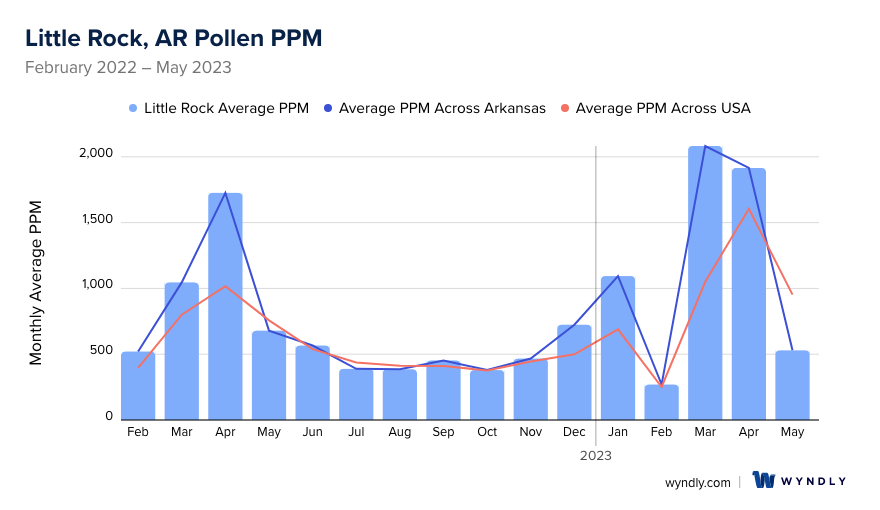
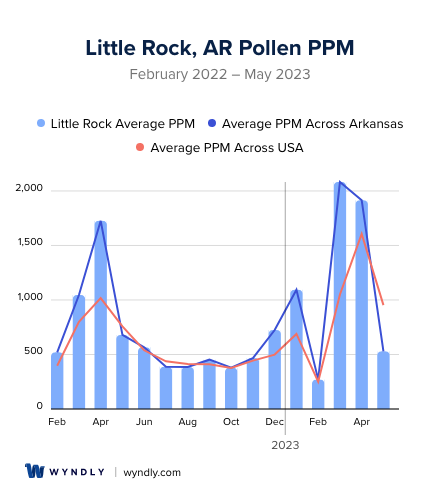
Little Rock, AR Pollen and Allergy Breakdown by Month
Grass
When is grass pollen highest in Little Rock, AR?
April has the highest grass pollen in Little Rock, AR with an average PPM of
When is grass pollen lowest in Little Rock, AR?
December has the lowest grass pollen in Little Rock, AR with an average PPM of
Tree
When is tree pollen highest in Little Rock, AR?
March has the highest tree pollen in Little Rock, AR with an average PPM of
When is tree pollen lowest in Little Rock, AR?
September has the lowest tree pollen in Little Rock, AR with an average PPM of
Weed
When is weed pollen highest in Little Rock, AR?
June has the highest weed pollen in Little Rock, AR with an average PPM of
When is weed pollen lowest in Little Rock, AR?
February has the lowest weed pollen in Little Rock, AR with an average PPM of
Little Rock, AR Pollen Monthly Breakdown by Pollen Type
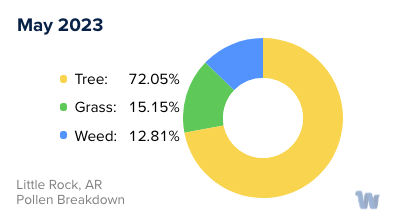
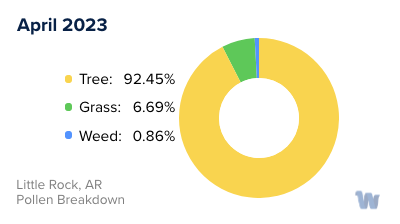
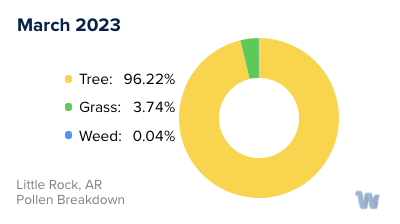
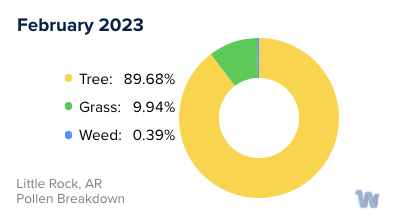
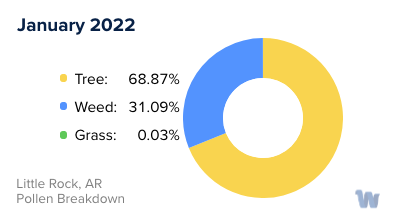
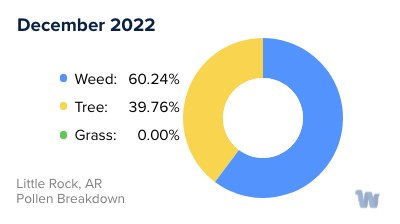
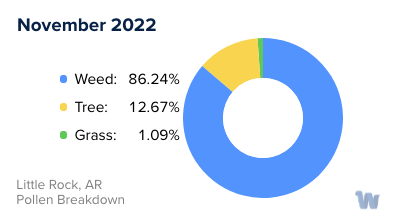
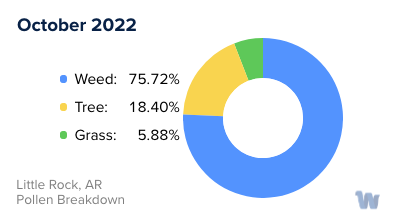
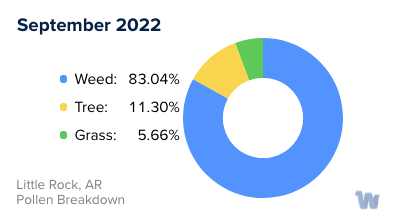
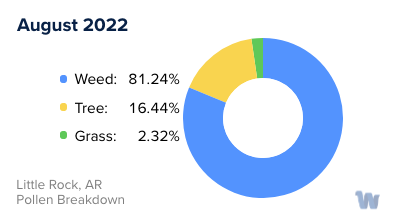
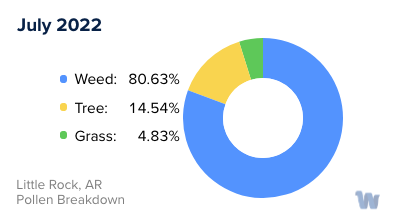
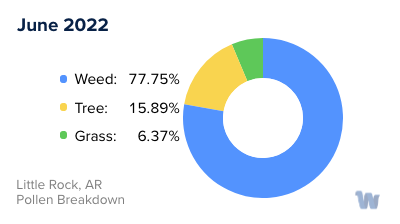
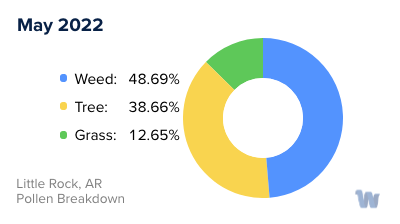
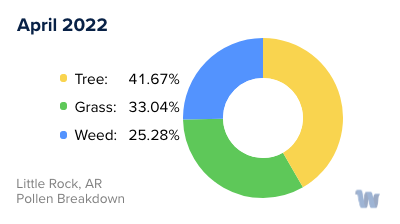
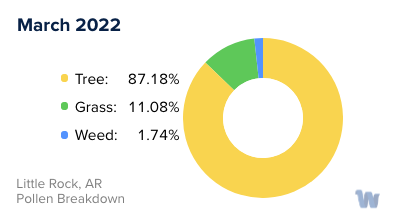
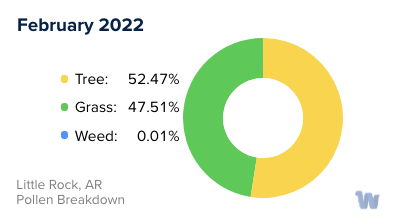
Pollen and Hay Fever in Little Rock, AR
In the charming city of Little Rock, Arkansas, life is a blend of natural beauty and urban sophistication. However, for many residents, the city's changing seasons bring an unwelcome guest: pollen allergies, often referred to as hay fever.
In Little Rock, the cycle of pollen release is primarily dictated by the local flora. The city, blessed with an array of plants, has its residents dealing with different types of pollen throughout the year. One of the main culprits is tree pollen. From February to June, oaks, pines, and hickories begin their annual pollen release, painting the town in a fine, yellow dust.
As spring evolves into summer, the tree pollen begins to wane, but another allergen takes the stage. This is when grasses, such as Bermuda grass, Kentucky bluegrass, and ryegrass, begin to release their pollen. From May to August, these grasses take turns filling the air, creating a second wave of allergies for many Little Rock residents.
But the cycle doesn't end there. As summer turns to fall, the city's weed population begins to blossom. The ragweed pollen season in Little Rock runs from late August until the first frost, usually in November. These plants are particularly potent allergen producers, capable of releasing billions of tiny pollen grains into the air.
The cycle of pollen allergies in Little Rock is as diverse as its seasons. As the city cycles through its flora calendar, residents face a rotating roster of allergens. It's a testament to the city's vibrant ecosystem, even if it is a challenging one for those with hay fever. Understanding these cycles can help individuals better anticipate and prepare for their symptoms, contributing to a more comfortable and enjoyable life in Little Rock.

